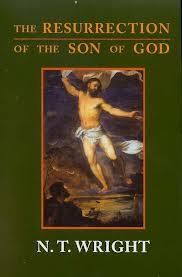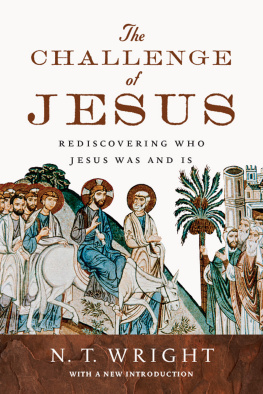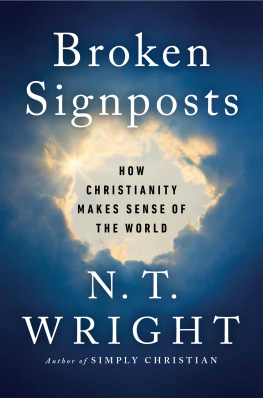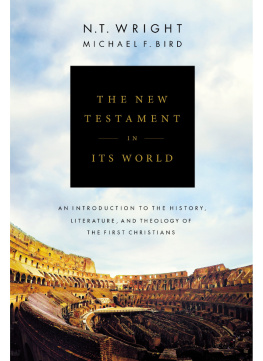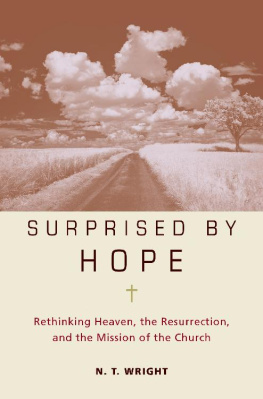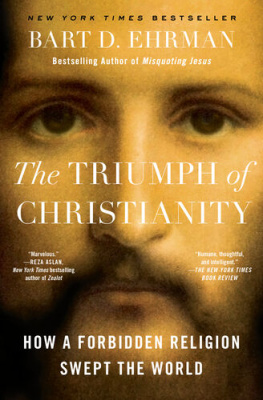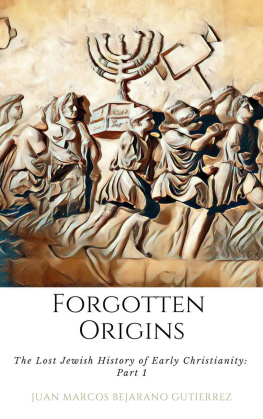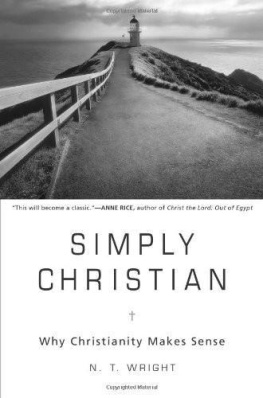PREFACE
I
This book started life as the final chapter of Jesus and the Victory of God (1996), the second volume in the series Christian Origins and the Question of God , of which the first volume is The New Testament and the People of God (1992). The present work now forms the third volume in the series. This is a departure from the original plan, and since people often ask me what is going on some explanation may be appreciated.
A few months before I finished work on Jesus and the Victory of God (hereafter JVG ), Simon Kingston of SPCK came to see me to say that, since the covers for the book had already been printed, I had an absolute maximum number of pages available, and what did I propose to do? Had the work run its intended course, with the material in what is now the present book compressed (as I had foolishly thought I could compress it) into seventy pages or so, would have been at least 800 pages long, and would have burst out of its own new covers, not a sight a middle-aged scholar wishes to see.
As providence would have it, I was at the same time turning over in my mind the choice of topic for the Shaffer Lectures at Yale Divinity School, which I was due to give in the Fall of 1996, shortly after the publication date for JVG . The topic was supposed to be something to do with Jesus. I had puzzled over how I might either compress material from the big book which would just have been published, or try to lecture on some aspect of Jesus I had not covered in the book (which I had hoped would be reasonably exhaustive; certainly I did not intend to leave out three lectures worth of original material). The two problems solved each other: miss out the resurrection chapter from JVG , lecture on the resurrection in Yale, and turn the three lectures into a small book to join the present series, in between JVG and the originally projected third volume on Paul, which would now become Volume IV. (This had the unexpected result that some reviewers of JVG accused me of not being interested in, or not believing in, Jesus resurrection. I trust that this accusation may now be laid gently to rest.)
The Shaffer lectures were exciting, for me at any rate. My hosts at Yale were warm in their hospitality to my wife and myself, and encouraging in their response, on top of the honour they had shown me by their invitation. But it was clear that each lecture needed expanding considerably. So, to help me towards what I still hoped would be a short book, I frequently chose the same topic when lecturing elsewhere in the next three years: the Drumwright Lectures at South-Western Theological Seminary in Fort Worth, Texas, the Bishops Lectures at Winchester, the Hoon-Bullock Lectures at Trinity University in San Antonio, Texas, the DuBose Lectures at the University of the South in Sewanee, Tennessee, the Kenneth W. Clark Lectures at Duke Divinity School, Durham, North Carolina, and the Sprunt Lectures in Union Seminary, Richmond, Virginia. (The Sewanee version was published in the Sewanee Theological Review 41:2, 1998, 10756; I have published other lectures and essays on the subject from time to time, details of which are in the Bibliography.) I gave similar lectures to the Princeton Theological Seminary Summer School at St Andrews; and I compressed the argument into a single lecture for various establishments, including St Michaels Seminary, Baltimore, the Pontifical Gregorian University in Rome, and Truett Seminary, Baylor University, Waco, Texas. I have grateful memories of all these institutions. Their hospitality was uniformly magnificent.
But the highlight, enabling me to lay out the material in much more detail and giving me space and time to ferret around and fill in lots of gaps, came when I was appointed to the MacDonald Visiting Chair at Harvard Divinity School for the Fall Semester of 1999. Suddenly, instead of three or four lectures, I had the chance to give more than twenty on the topic, to a large, intelligent and, in the best sense, critical student audience. Of course, I emerged from each lecture realizing that the material still deserved much more expansion. My initial dream of writing up this book as I went along (and my initial expectation that it would be a small book) was unrealizable. But I was able to lay the foundation for the present work far more deeply than before, in a wonderfully congenial setting. I am extremely grateful to my colleagues and friends in Harvard, and to Al MacDonald, the founder of the Chair, whose personal support and enthusiasm for my work has been a great encouragement. Thus, though the book has changed its shape considerably since late 1999, the seeds sown in Yale bore fruit in Harvard, fruit which in this book is brought at last to harvest. I trust my friends in both august establishments will not object to finding themselves thus associated with one another.
II
The book has reached its present length partly because, as I have worked over the material and read as much as I could of the voluminous secondary literature, it has seemed to me that all kinds of misconceptions about both the key ideas and the key texts have over the years become widely accepted. As with certain types of garden weed, there are occasions when the only thing to be done is to dig deeper to get right under the roots. In particular, it has become accepted within much New Testament scholarship that the earliest Christians did not think of Jesus as having been bodily raised from the dead; Paul is regularly cited as the chief witness for what people routinely call a more spiritual point of view. This is so misleading (scholars do not like to say that their colleagues are plain wrong, but misleading is of course our code for the same thing) and yet so widespread that it has taken quite a lot of digging to uproot the weed, and quite a lot of careful sowing to plant the seeds of what, I hope, is the historically grounded alternative. Readers may be glad that I have not had space to highlight more than a few examples here and there of what I take to be misleading views both of Judaism and of the New Testament. I have preferred to expound the primary sources, and to let them shape the book, rather than to offer a lengthy state of the question and to allow that to dominate the horizon. (The first part of Jesus and the Victory of God provides a general background to the discussion.)

